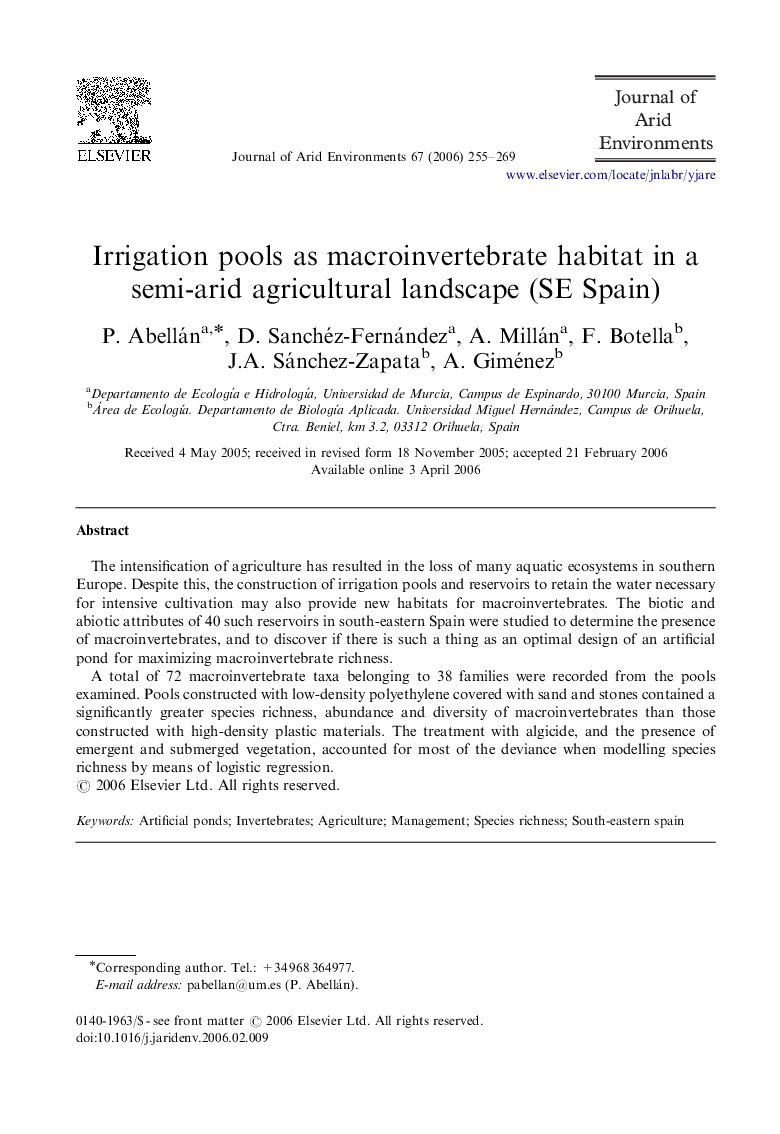| Article ID | Journal | Published Year | Pages | File Type |
|---|---|---|---|---|
| 4394650 | Journal of Arid Environments | 2006 | 15 Pages |
The intensification of agriculture has resulted in the loss of many aquatic ecosystems in southern Europe. Despite this, the construction of irrigation pools and reservoirs to retain the water necessary for intensive cultivation may also provide new habitats for macroinvertebrates. The biotic and abiotic attributes of 40 such reservoirs in south-eastern Spain were studied to determine the presence of macroinvertebrates, and to discover if there is such a thing as an optimal design of an artificial pond for maximizing macroinvertebrate richness.A total of 72 macroinvertebrate taxa belonging to 38 families were recorded from the pools examined. Pools constructed with low-density polyethylene covered with sand and stones contained a significantly greater species richness, abundance and diversity of macroinvertebrates than those constructed with high-density plastic materials. The treatment with algicide, and the presence of emergent and submerged vegetation, accounted for most of the deviance when modelling species richness by means of logistic regression.
